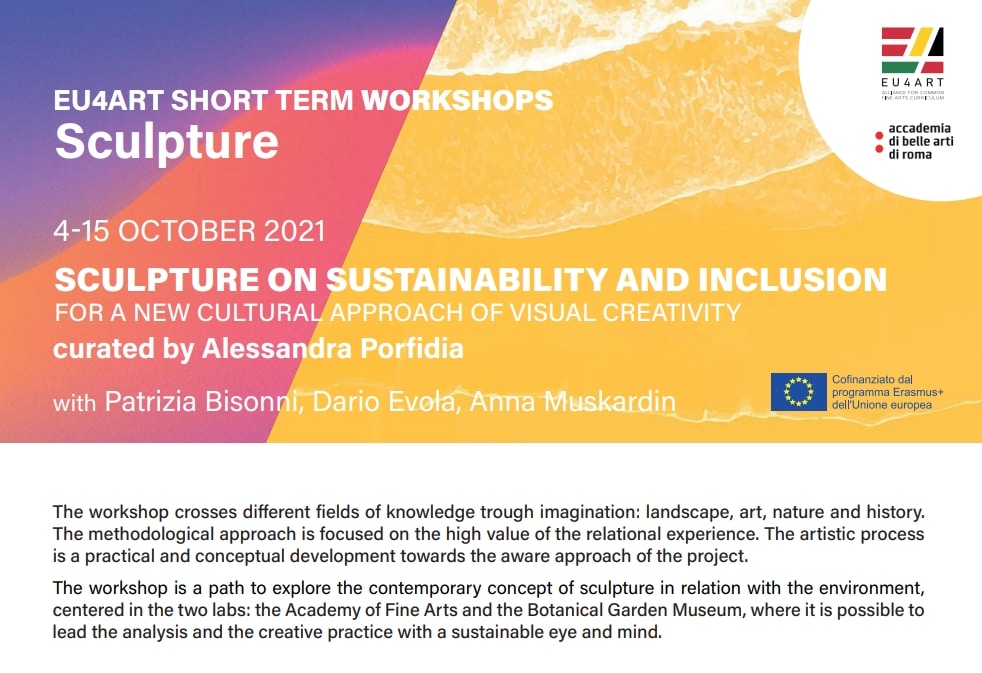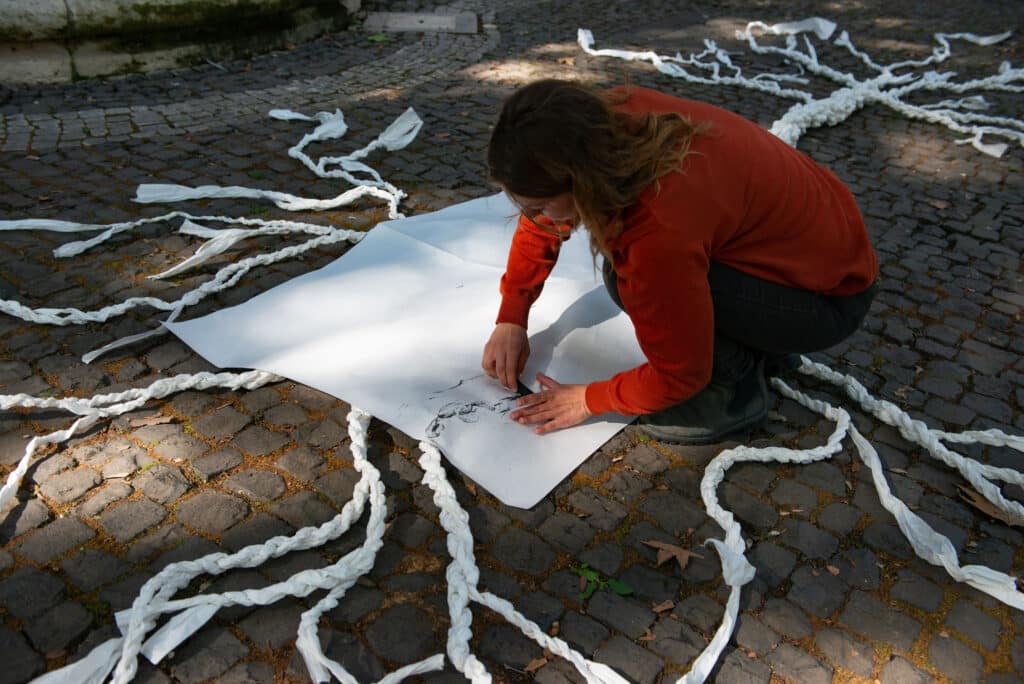On the first day of the workshop, the participants had the opportunity to visit together with the professors the beating heart of the artistic life of Rome bursting on Via del Corso, Via Ripetta and Piazza del Popolo.
The main body of the workshop was unfolded around the relationship between art and nature. For this reason, the Botanical Garden of Rome was selected as the main arena of the artistic action since it carries the unique characteristic of being not only a botanical garden but also an archeological area.
The participants held accompanied by Professor Porfidia and Professor Bisonni wandered the different sections of the Garden such as The Rose Garden, the Japanese Garden, the Medical Garden and the Greenhouses in order to discover the different plants and also to collect materials that later will use for the production of their works.
So as to reinforce the dialogue between art and nature, the work evolved at the Botanical Garden was alternated with visits to some of the most important museums of Rome, such as the Etruscan Museum of Villa Giulia, MAXXI – the National Museum of XXI Century Art and the National Gallery of Modern and Contemporary Art. Through the agency of the professors’ analysis, the students had the opportunity to get introduced to the ancient Roman culture and understand its evolution to contemporary Italian art. This analysis has allowed the main sculptural techniques to be highlighted and also enabled the students to experiment with them during the workshop.
Professor Muskardin organized and accompanied the participants to visit the Fattoria di Celle in Pistoia that hosts the Gori Collection, an important contemporary art collection that includes works of Robert Morris, Dennis Oppenheim, Richard Serra, Giuseppe Penone, Mimmo Paladino, Michelangelo Pistoletto, etc. During this visit, the students had the chance to admire the rural Tuscan landscape in which the important contemporary artworks were installed and to discover the complex relationship between nature and the sculptures.
Throughout the two-week workshop, Professor Porfidia and Professor Bisonni followed the artistic production of the students and assisted them to realize their artworks made exclusively from natural materials incorporating the idea of sustainability in art. On the last day, the participants presented the works produced during the workshop at the Academy of Fine Arts of Rome and the Botanical Garden.

